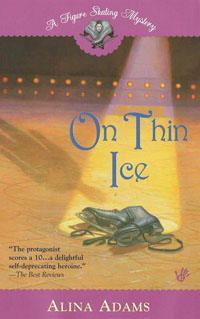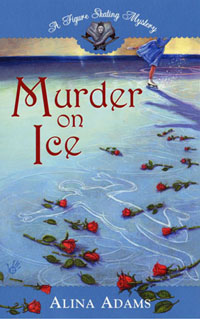SKATING TURNS PRO (PART #3)
In 1985, the growing success of the World Pros prompted ABC to ask Dick Button and Candid Productions for another event, one that would take place outside of the U.S. So The Challenge of Champions debuted in France. Unlike World Pros, which featured technical and artistic programs (with two sets of scores for each) for the Men's, Ladies', and Pairs, and a Rhythm Dance and Free Dance for the ice-dancers, Challenge of Champions presented a single program, judged both artistically and technically, followed by an Exhibition Gala the same evening.
1985 was also the last year when World Pros would be scored as a team event, though individual scores were again, noted.
Dorothy Hamill, along with Torvill & Dean, won their second consecutive Pro titles, and Babilonia & Gardner finally broke free from last place, where they'd languished in 1983 and 1984. They won the Pairs title over the Protopopovs, who retired from amateur skating in 1969, two years before Tai and Randy entered their first, Novice competition.
Among the men, fans got their first look at the rivalry that would dominate the next two years of World Pros. 1980 Olympic champion Robin Cousins, performing a classic soft-shoe, defeated the 1984 champion, Scott Hamilton. He repeated that feat at the inaugural Challenge of Champions.
A year later, the standings would flip as Hamilton's emotional, "Battle Hymn of the Republic," in memory of the 1961 U.S. team killed in a plane crash, outscored Cousins' more modern, electric-music exhibition. Hamilton would also go on to win the Challenge of Champions.
However, in 1987, judges preferred Cousins' equally modern "Machinery," over Hamilton's comic forecast of "When I'm 64."
Commends Ribbens, "Robin changed day and night when he became a pro. He started to work with artists, he started working on concepts, he started to think. He transformed himself. (Without pro competitions) he wouldn't have had the opportunity. In a show, why would he have challenged himself? When Robin came to World Pro in 1980, he worked with people like Peggy Fleming, and he saw that there was more to skating than just doing your tricks. It must have opened his eyes, because, by the time the individual competitions came around, he was ready for them."
1988 was another Olympic year, meaning new blood for the World Pros. Yet, in Pairs and Dance, respectively, the Olympic Bronze medalists, Jill Watson & Peter Oppegard, and Tracy Wilson & Robert McCall could finish no higher than last.
Ladies' Bronze Medalist Debi Thomas had better luck, winning the event and halting Hamill's four year winning streak. Yet, in spite of winning three World Pro titles (1988, 1989 & 1991), Thomas gave up the circuit, returned to medical school and, in 1997, graduated from Northwestern University a month before giving birth to her first child.
The 1988 World Pro men's event was trumpeted as a rematch of Calgary's "Battle of the Brians." Gold Medalist Boitano against the Silver Medalist and 1987 World Champion Orser.
Unfortunately, Orser didn't so much dazzle as confound the judges, coming out in Indian war-paint and tufts of hay strapped to his arm and leg, to perform "The Lion Sleeps Tonight." The hay made it difficult for Orser to control his jumps, and the decline in technical content of the first man to do two Triple Axels in a program allowed for Scott Hamilton, who'd barely been mentioned in the pre-event hoopla, to skate a high-energy, jump-packed, dazzling gold-lame "In the Mood," and vault into second place behind Boitano, whose technical level, Triple Axel and all, had not dropped a notch since the Olympics.
Traditionally, each new influx of post-Olympic skaters raised the level of pro competition.
Remembers Ribbens, "Starting in the mid-80s, when World Pro went from team competition to an individual competition, that got everybody's pride going. It was competitive between Robin and Scott, so it pushed them to keep their level up. But, when Boitano came in that's when it went up to the next level. He brought his technical skills. He didn't scale down from what he did at the Olympics. And that pushed everybody."
(To Be Continued)
1985 was also the last year when World Pros would be scored as a team event, though individual scores were again, noted.
Dorothy Hamill, along with Torvill & Dean, won their second consecutive Pro titles, and Babilonia & Gardner finally broke free from last place, where they'd languished in 1983 and 1984. They won the Pairs title over the Protopopovs, who retired from amateur skating in 1969, two years before Tai and Randy entered their first, Novice competition.
Among the men, fans got their first look at the rivalry that would dominate the next two years of World Pros. 1980 Olympic champion Robin Cousins, performing a classic soft-shoe, defeated the 1984 champion, Scott Hamilton. He repeated that feat at the inaugural Challenge of Champions.
A year later, the standings would flip as Hamilton's emotional, "Battle Hymn of the Republic," in memory of the 1961 U.S. team killed in a plane crash, outscored Cousins' more modern, electric-music exhibition. Hamilton would also go on to win the Challenge of Champions.
However, in 1987, judges preferred Cousins' equally modern "Machinery," over Hamilton's comic forecast of "When I'm 64."
Commends Ribbens, "Robin changed day and night when he became a pro. He started to work with artists, he started working on concepts, he started to think. He transformed himself. (Without pro competitions) he wouldn't have had the opportunity. In a show, why would he have challenged himself? When Robin came to World Pro in 1980, he worked with people like Peggy Fleming, and he saw that there was more to skating than just doing your tricks. It must have opened his eyes, because, by the time the individual competitions came around, he was ready for them."
1988 was another Olympic year, meaning new blood for the World Pros. Yet, in Pairs and Dance, respectively, the Olympic Bronze medalists, Jill Watson & Peter Oppegard, and Tracy Wilson & Robert McCall could finish no higher than last.
Ladies' Bronze Medalist Debi Thomas had better luck, winning the event and halting Hamill's four year winning streak. Yet, in spite of winning three World Pro titles (1988, 1989 & 1991), Thomas gave up the circuit, returned to medical school and, in 1997, graduated from Northwestern University a month before giving birth to her first child.
The 1988 World Pro men's event was trumpeted as a rematch of Calgary's "Battle of the Brians." Gold Medalist Boitano against the Silver Medalist and 1987 World Champion Orser.
Unfortunately, Orser didn't so much dazzle as confound the judges, coming out in Indian war-paint and tufts of hay strapped to his arm and leg, to perform "The Lion Sleeps Tonight." The hay made it difficult for Orser to control his jumps, and the decline in technical content of the first man to do two Triple Axels in a program allowed for Scott Hamilton, who'd barely been mentioned in the pre-event hoopla, to skate a high-energy, jump-packed, dazzling gold-lame "In the Mood," and vault into second place behind Boitano, whose technical level, Triple Axel and all, had not dropped a notch since the Olympics.
Traditionally, each new influx of post-Olympic skaters raised the level of pro competition.
Remembers Ribbens, "Starting in the mid-80s, when World Pro went from team competition to an individual competition, that got everybody's pride going. It was competitive between Robin and Scott, so it pushed them to keep their level up. But, when Boitano came in that's when it went up to the next level. He brought his technical skills. He didn't scale down from what he did at the Olympics. And that pushed everybody."
(To Be Continued)






0 Comments:
Post a Comment
Links to this post:
Create a Link
<< Home